Mythmaking in the Information Age: In Conversation with Eunjo Lee
By Keshav AnandBringing together a body of work that blends 3D animation, mythology and ecological speculation, South Korean artist and filmmaker Eunjo Lee returns to her alma mater—where she graduated just last year—for a solo exhibition at Goldsmiths CCA. The presentation, titled Before the Shadow Taught the Sun, is part of the gallery’s Episodes series, a programme focused on providing an experimental platform for emergent practices. Based between London and Seoul, Lee constructs immersive digital landscapes inhabited by post-human figures, where the boundaries between man and machine blur. On the occasion of her new show, Something Curated’s Keshav Anand spoke with Lee about the spiritual capacities of digital media, building worlds beyond dystopia, and the symbolic language of stones.
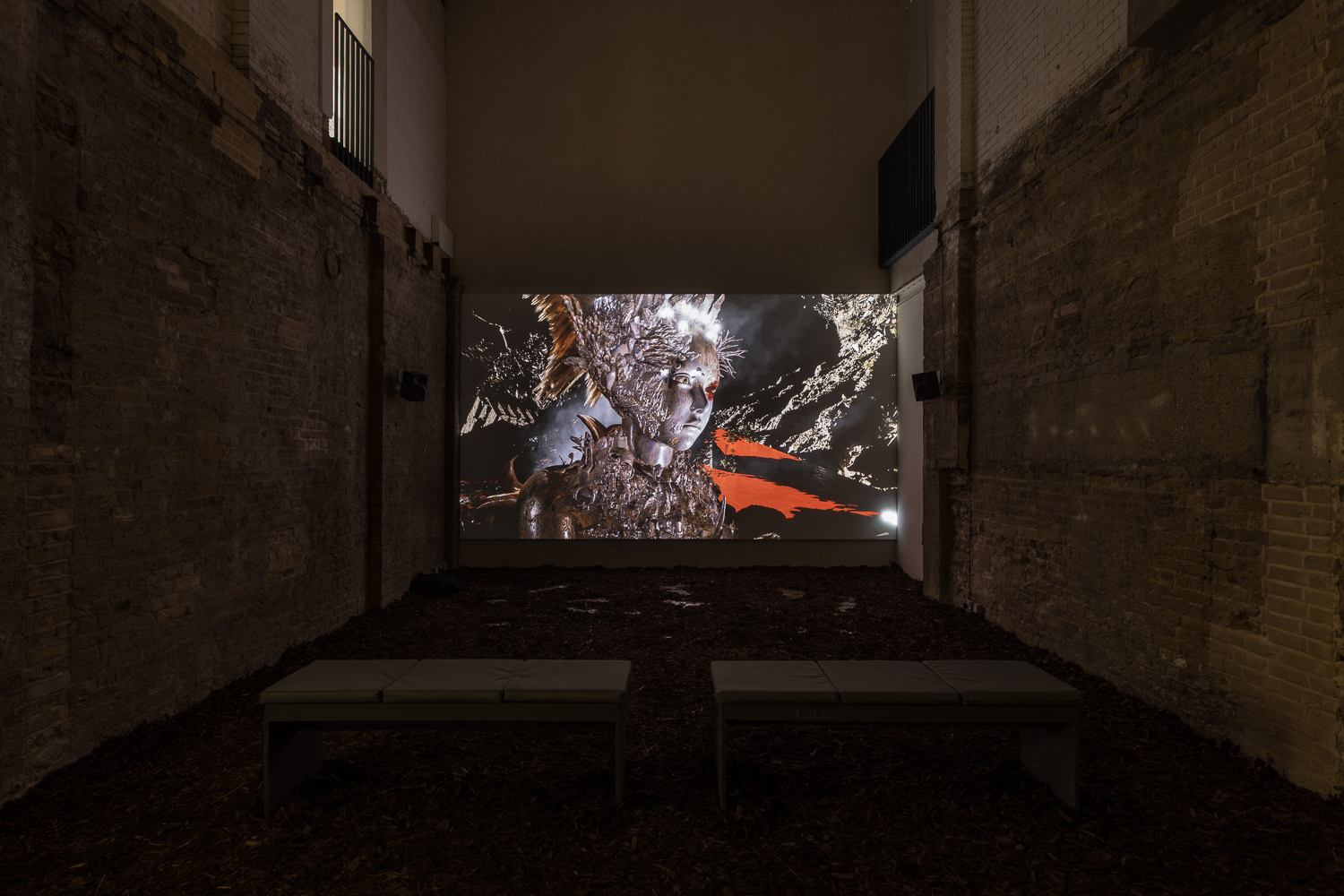
Keshav Anand: What does mythology mean to you in a contemporary context?
Eunjo Lee: It may sound ambitious, but in the longer view, my work with digital media seeks not just to tell stories, but to create what I call a contemporary mythology. Joseph Campbell, in The Power of Myth, describes life as a terrifying mystery sustained by consuming the living, and indeed we survive by feeding on other beings, while much of the land we inhabit bears traces of death. In early societies, this fundamental dependence on life-taking was not seen as a private act but understood as a sacred responsibility, one that required ritual to confront the moral weight of killing. These practices served not only to cleanse the guilt of taking life, but also to help make sense of the deeper contradictions of existence. From such rites, myths emerged, offering symbolic meaning to sacrifice and situating it within a broader cosmological understanding.
At the heart of myth lies the idea that to live is, in essence, to consume oneself; the taking of life was accompanied by the belief that the other, immortal in essence, might one day return to consume us in turn. This worldview dissolved the boundary between self and other, recognising a shared sacred presence in all beings and enabling early societies to live in balance with nature through a spiritual understanding of life’s cycles. Though much of this sensibility has faded in modern times, I believe that reimagining such a cosmology today can renew our awareness of life precisely through a deeper reverence for death. Through digital media, I seek to revive this mythic consciousness by evoking it through images and narratives shaped by the conditions of the present.
For many today, the experience of nature has been displaced by urban environments and technological systems. In this context we may require new myths that allow us to see life not as opposed to machines but as something continuous with them. If machines, ruins, abject forms and microbes—alongside animals and plants—can be drawn into the symbolic processes once reserved for myth, and if these begin to shape the collective unconscious, then perhaps a deeper kind of mutual understanding may emerge. Recognising that we are not consuming others but ourselves offers a way to confront the paradox at the heart of existence, where facing death becomes essential to sustaining life. This tension takes on renewed significance today, as we reflect on the evolving relationship between humans and technology. In my work, I revisit mythologies rich in poetic and uncanny imagery, drawing on symbols carried through the collective unconscious. Through digital forms I attempt to reawaken these symbols and explore the entangled relationship between technology and nature, spirituality and the human. Within this, I also see personal mourning as a vital dimension of myth-making.
Partings unfold in our daily lives, and the pain of losing someone we love can become a point where private myth begins. The belief that life does not end here, that the departed may return, that we might meet again—such hopes express a mythic sense of continuity that extends beyond the present. Art, in this light, becomes a space for shared mourning and spiritual connection. With this in mind I turn to archetypal images that have endured across time, seeking to reconstruct the unconscious in dialogue with the contemporary condition where machines, ruins and the abject have become a new kind of nature by weaving mythic forms from diverse cultures into new symbolic narratives. As Campbell writes, myth is not merely a story but a collective dream, one that restores our severed ties with the cosmos. Across cultures, recurring mythic forms reveal something enduring in the human psyche. These are not simply motifs but archetypal images that carry the essence of being. I reinterpret this symbolic language through my own perspective, presenting it as contemporary mythology through the medium of moving image.
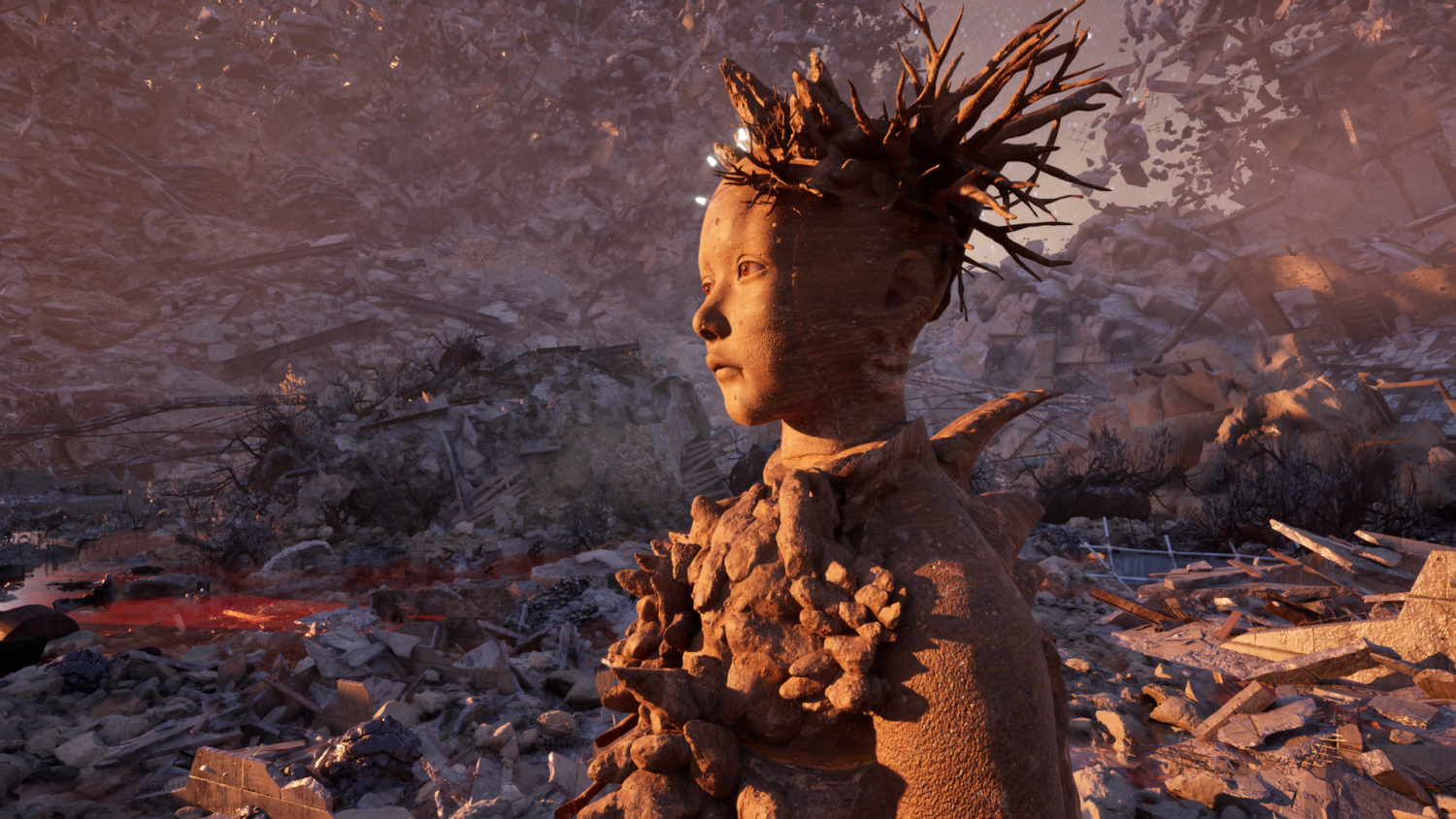
KA: Your work engages with world-building on a profound level. Are there any books, films, or other forms of art that have inspired the worlds you create?
EL: When I was fourteen, I read The City of Dreaming Books by Walter Moers. I still remember closing the book and feeling as though my whole body was vibrating, overwhelmed by the intensity of its impact. Moers is a renowned German fantasy writer who created the fictional world of Zamonia, which unfolds across a series of novels. I read them all and spent more than a decade writing my own sequels, inventing characters and stories set in his universe. It became a daily habit, and I often fell asleep imagining the next scene. From that time until my mid twenties, I wanted to build a world of my own and invite others into it. That early experience became the foundation of my practice and gradually led me to think more deeply about what kind of world should be imagined and brought into being. At the time, storytelling became more than just a creative act—it turned into a way of experimenting, within imagined worlds, with the conditions of existence and the structure of reality. It evolved into a concrete process of world-making, through which I could explore new sensations and possibilities for life.
Certain theoretical texts have been especially influential in this regard. Jane Bennett’s Vibrant Matter expanded my sense of vitality by positioning the inanimate as an active agent. Thomas Berry’s The Great Work offered a cosmology in which humans and nature exist as part of a larger living community in my world. I have read most of Joseph Campbell’s books, but The Power of Myth and the four-volume series The Masks of God, were especially important in helping me understand myth as a source of symbolic structure, and in encouraging me to approach art as a form of myth making. Carl Jung’s Man and His Symbols offered a way of understanding how unconscious images shape human experience, which continues to inform how I work with symbolic forms. Another source of inspiration has been Spirit Tech by Kate J. Stockly and Wesley Wildman, which sparked my curiosity about how machines and spirituality might coexist within the same imagined world. Alongside these, I continue to draw inspiration from various religious texts, including the Upanishads, Tibetan and Mahāyāna Buddhist writings, and the Bible.
In film, I have been deeply influenced by directors who use symbolism in both beautiful and profound ways, such as Alejandro Jodorowsky’s The Holy Mountain, Apichatpong Weerasethakul’s Uncle Boonmee Who Can Recall His Past Lives, and Guillermo del Toro’s Pan’s Labyrinth, with its darker fantasy sensibility. If I had to name one contemporary artist who has had the greatest influence on me, it would be William Kentridge. His work is not usually described in terms of world building, but I find that quality in it quite powerfully. His exhibitions are composed of elements that feel deeply interconnected, forming a coherent cosmos of thought and movement. For me, his work is not just a collection of pieces but a living world that expresses an inner logic and aesthetic vision. That way of working resonates with how I think about world building in my own practice.
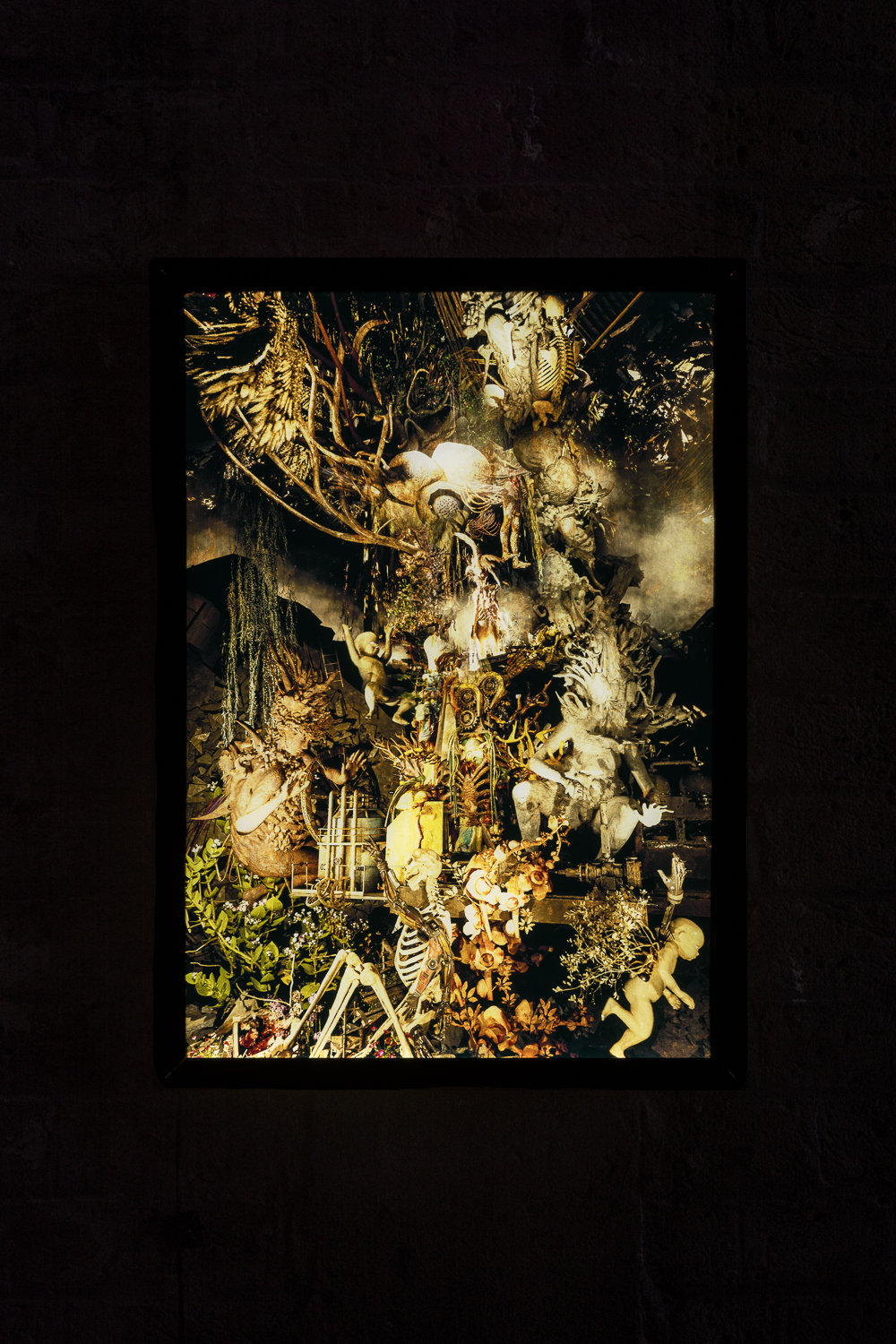
KA: Many of your characters are hybrids—part organic, part mechanical. What interests you in this fusion of nature and technology?
EL: I’ve long questioned the binary view that separates nature and technology. We often regard nature as pure and essential, while seeing technology as artificial and human-centred. But I believe it is important to make more explicit the understanding that humans are not separate from nature, but part of it. Technology, too, is rooted in the materials and energies of the natural world. The elements found in our smartphones and computers—aluminium, silicon, lithium, cobalt—are the same substances that form stars and planets. Even the most advanced tools used in architecture or satellite communication begin with minerals drawn from the earth’s crust and energy from the sun. From this perspective, I’ve come to see the mechanical structures of modern civilisation as another expression of nature. Within them, I sense a kind of embedded spirituality and responsiveness. The hybrid figures in my work emerge from this view. They are not torn between the organic and the artificial, but instead represent a new mode of being that arises where such distinctions begin to dissolve. Visually, their forms often blend bodily elements such as mucous, muscle and flowing textures with metallic surfaces or digital sheens. The result is a kind of unfamiliar intimacy. Rather than layering technology onto nature, I see these forms as shaped by the recognition that technology is already within nature.
These beings also remain in a state of becoming. They do not conform to fixed identities, but shift, intersect and move between states. Their hybridity is not merely aesthetic. It reflects a desire to question modern ideas of mastery and separation, and to recover a sense of entanglement, where all forms of existence are interwoven. For me, the machine is not opposed to life. It is part of it, an extension of it, and at times, a vessel for spiritual resonance. Artificial intelligence, too, is not something alien but a product of the human mind. It belongs to nature, and I see it as another form of dialogue we share with ourselves and with the world.
KA: Building on this line of thinking, your work frequently blurs the boundaries between human and non-human subjecthood. How do you envision this redefinition influencing our understanding of identity and agency?
EL: Through moving image, I seek to critique and move beyond an anthropocentric worldview by imagining not only animals, plants, machines and immaterial entities, but also abject matter—blood, entrails, ruins, waste—as agents with equal ontological status to humans. These are substances often seen as dirty, repulsive or close to death, pushed to the margins of perception. Yet I believe it is precisely through such rejected materials and avoided sensations that we can access new forms of ethical relation and spiritual sensitivity. This approach is not about simply humanising the non-human, but about reimagining subjecthood itself, so that humans are no longer placed at the centre. By blurring the boundaries between human and non-human, organic and mechanical, sacred and abject, my work reveals that subjectivity is not essential or fixed, but historically and culturally constructed. Undoing these boundaries challenges human exceptionalism and opens space to rethink and expand identity and agency beyond human-centred frameworks. In particular, I challenge the assumption that capacities such as emotion, pain, or affect belong exclusively to human beings. When I attribute these sensibilities to non-human subjects in my work, it is often criticised as anthropomorphism. But I see the real issue as the belief that such experiences are uniquely human—an assumption that lies at the very core of anthropocentrism.
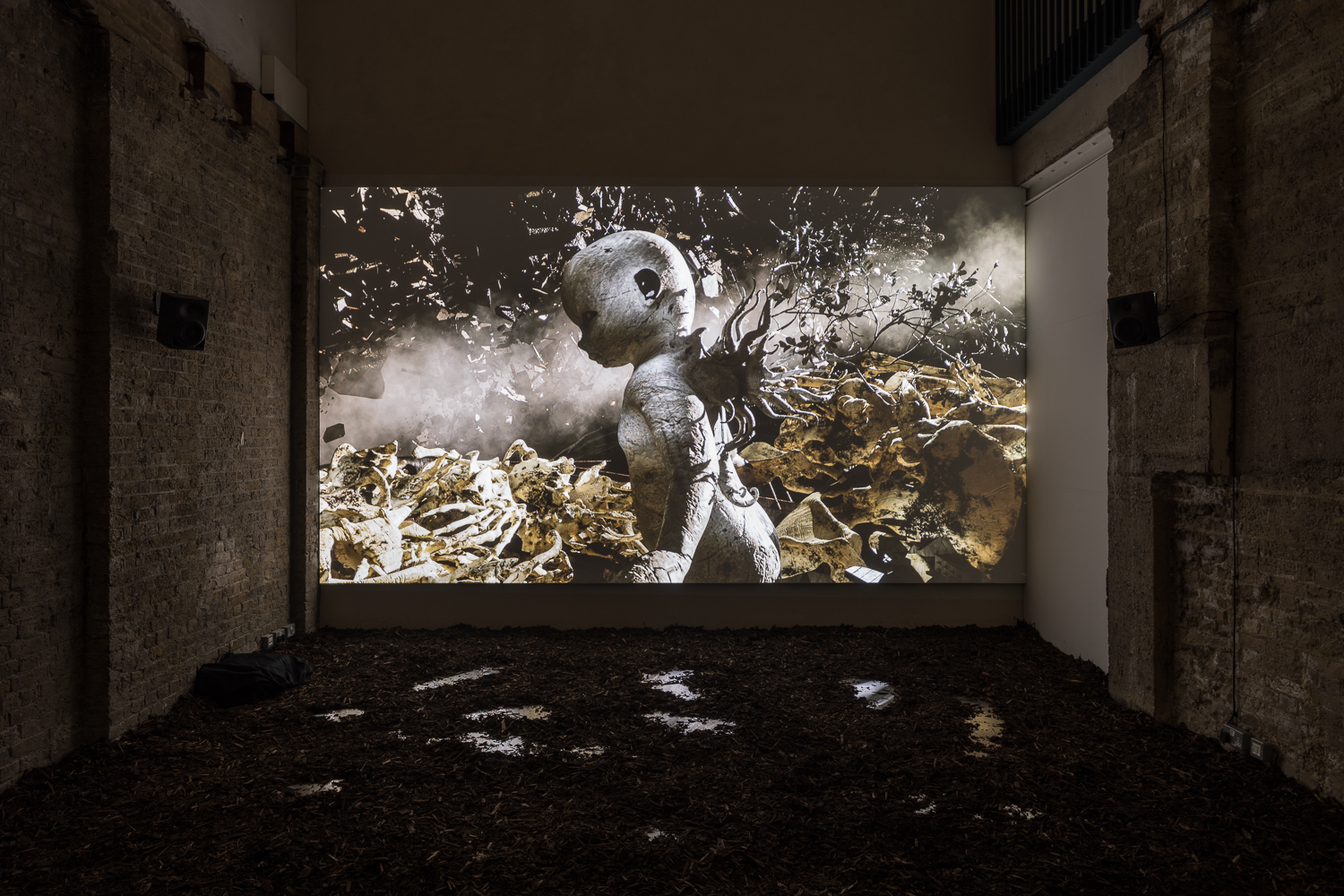
This line of thought is closely aligned with Jane Bennett’s concept of ‘vibrant matter’, in which she argues that objects and materials, typically viewed as passive or inert, possess their own affective and agential capacities. For me, substances like blood, ash, entrails, and debris are not merely symbols of death or waste but living materials entangled with cycles of birth and decay, holding their own resonance and vitality. This approach to spirituality differs from traditional religious or metaphysical views; instead, it senses the rhythms of life and the cosmos through what is most earthly, rejected, and abject. I believe that shifting our worldview to recognise not only non-human beings but even abject matter as legitimate actants is crucial. The structural violences we face today—climate change, war, ecological destruction—are rooted in hierarchical divisions between beings. Dismantling these divisions requires a fundamental shift in perception, and I see this as a form of resistance. Art enables this transformation not by imposing ideology, but by offering subtle, sensorial propositions that gently shift how we perceive and relate to the world. I aim to reveal the affective and agentic qualities of non-human entities, inviting a quiet yet profound shift in ontological sensitivity.
KA: Can you share more about the process of developing the sonic and linguistic elements of your work?
EL: My process is rooted in research, often drawing from mythology, religion and philosophy to build symbolic narratives. I’m particularly drawn to poetic, condensed lines found in ancient texts and scriptures, which often become seeds for the film’s narration. I reshape and combine them with my own writing to compose dialogue that reads almost like a poem. Though it’s a slow process, it tends to unfold intuitively rather than logically, as I piece together narrative, language and image through instinct. Once the text reaches a certain stage, I begin refining it with Steph Hartop, a close friend and collaborator whom I met during the MFA at the Ruskin. I was immediately drawn to the stillness and gravity of her voice, which has since become central to all of my video work, where she performs the voiceover. Before each recording, we sit together and go through the text line by line, questioning each word—its feeling, rhythm and context. As I write the script in Korean, our conversations are key to shaping a translation that feels emotionally true in English. Steph reworks the lines with care, and once we reach a shared understanding, she records the narration. At first, recording in English felt natural, as I believed her native language would best carry the nuance of her voice. But as hybrid, non-human beings appeared in the work, she noted how strange it felt for them to speak English.
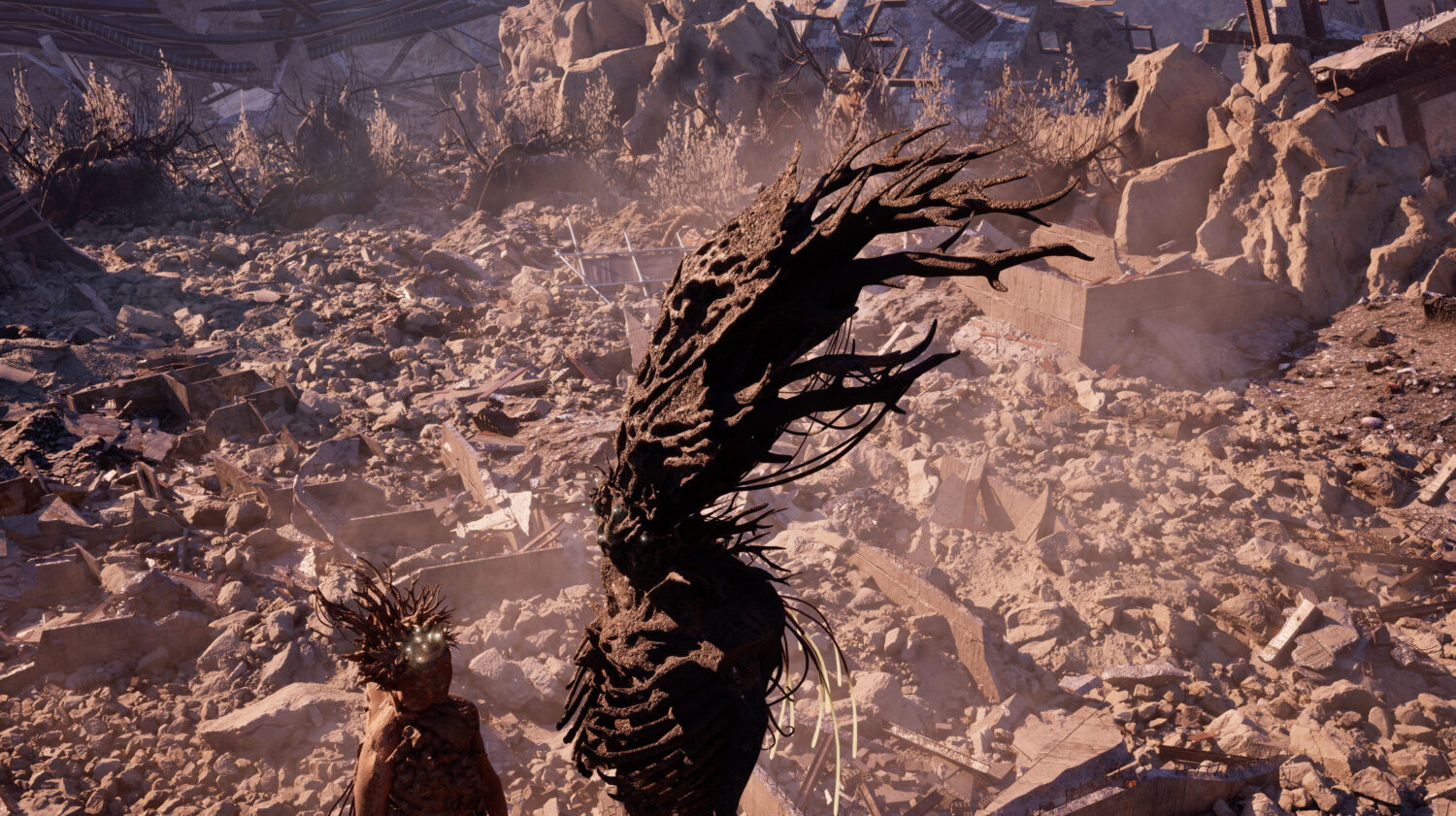
That’s when she introduced uvaguv, a secret language she had spoken with friends as a child. It was used to speak without adults understanding, and she still remembers it fluently. We used it in a story about a child trying to revive a stone—narrating in a language beyond adult comprehension felt fitting for such an intimate tale. In recent works, we’ve experimented with English, using a whispering tone instead of regular speech. Harry, who handles the sound design, layered it with deep textures and subtle noise to give it an otherworldly presence. His work brings a physical presence and a sense of magic, as everything finally feels alive through the soundscape and foley. Alongside this, Juliet Merchant’s music provides a vital emotional core. Her compositions do more than accompany the image. They shape its rhythm and inner structure, guiding how the work breathes and unfolds. Together, her sensitivity and Harry’s textural depth bring the world of the film to life in ways I could never achieve alone. I trust both of them deeply, which leads me to let them respond intuitively to the visuals before we refine the direction together. We then exchange feedback and continue shaping the work in dialogue.
KA: Changing pace for a moment, where are your favourite places to eat in Seoul, aside from home?
EL: There’s a restaurant called Ojang-dong Heungnamjip, which first opened in the 1950s. My grandparents used to take my father there when he was a child, and thanks to them, I’ve been going since I was young as well. It’s become something of a tradition, and I make sure to visit every time I return to Korea. The restaurant specialises in Hamheung naengmyeon, a North Korean cold noodle dish made with sweet potato starch noodles and served with a spicy, gochujang-based sauce. It’s known for its bold flavour and pleasantly chewy texture. The place itself is quite humble, with a quiet charm, and is often filled with elderly regulars and long-time patrons. If you ever find yourself in Seoul, I’d warmly recommend stopping by.
KA: And what are you currently listening to in the studio?
EL: I’ve loved Ólafur Arnalds’ music for a long time. His compositions are both beautiful and tinged with melancholy, which makes them ideal for working or concentrating, so I often have them playing in the background. Some personal favourites include Woven Song, This Place Is a Shelter, Árbakkinn, and Film Credits. I also enjoy listening to music by artists I’ve collaborated with. Paris Paloma is a brilliant songwriter with a unique voice and lyrical depth that I truly admire. I created the lyric video for her track Last Woman on Earth, and I’m especially fond of her songs Labour and As a Good Reason. Juliet Merchant, who composes music for my videos, is a deeply sensitive and intuitive musician whose work always moves me. I often play her full album Messages to People while working—I love every track and find it endlessly inspiring.
Eunjo Lee’s Before the Shadow Taught the Sun is on view at Goldsmiths CCA, London until 4 May 2025.
Feature image: Eunjo Lee, The Lullaby of the Ruins, 2023-24. Courtesy Eunjo Lee